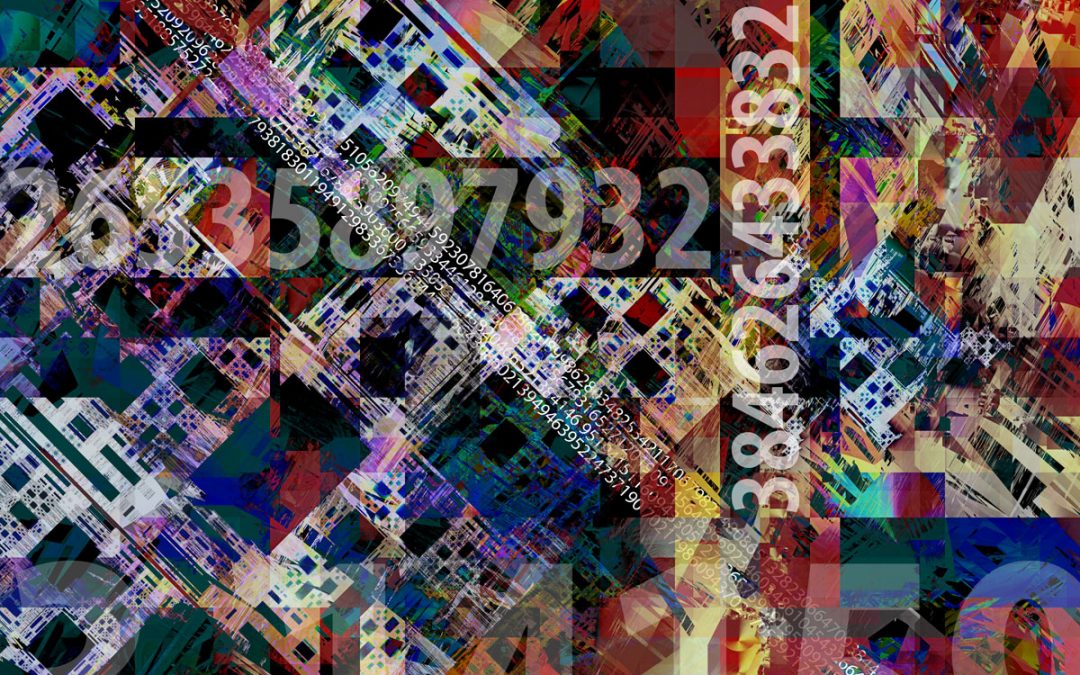My very first attempts to produce fractal prints happened in 1983, after I purchased the book The Fractal Geometry of Nature (1982) by Benoit Mandelbrot. Back then I was a math major at California State University Sacramento, and I was intrigued by the Mandelbrot Set and its remarkably simple formula. All I had then to make prints was a 4” thermal printer connected to a tiny Z-80 based computer that would run BASIC programs. The computer would run for days printing dots about every 30 seconds as it travelled down the x-axis of the set. While an image would develop very slowly, it was like exploring previously unseen things under a microscope and trying to figure out a meaning to it. While I never found the meaning, the searching has never stopped.
Today I have better computers and programs that I didn’t create to search for interesting images in an infinite mathematical universe. There’s no Artificial Intelligence involved, just the tweaking of formulas, layering of rendered image files and experimenting with transforms between layers. All of this is done with attention to light, color, structure and composition. I don’t start with an idea in mind, but I discover things as I virtually travel… like doing landscape photography without driving and hiking, or getting cold, wet and tired.
Sometimes I get surprised when an image talks back to me and tells me what it is. Not literally of course, but I find familiar things every once in a while. A good example of this is the story behind my piece “The Bellagio” that is currently on display at the Muntz Library at UT Tyler. As a professional photographer in the 2000’s, I attended photography conventions twice a year in Las Vegas. Each time, I would go to The Bellagio hotel to watch the Dancing Waters. On one of those visits the ceilings of the hallways to the Bellagio Shops were decorated with kites. Many years later, while playing with a fractal generator, an image appeared on my screen, and I knew immediately what it was. In the image I could see the hotel, the dancing waters and the kites. It’s certainly not like a photograph, but it’s a very good abstract representation of a time in my life. And I had never set out to find it. In a way, the image found me.
All of my mathematical works either trigger a personal thought or feeling, or remind me of something such as a recent news event, or represent something real or imaginary. An example is my piece “La Palma” which was created while the La Palma volcano in the Canary Islands was erupting and threatening thousands of people. I watched live La Palma updates on YouTube daily. During that time, while playing with layers of recently rendered mathematical images in Photoshop, the image I named “La Palma” happened. Like “The Bellagio” I immediately knew what the image represented.
In my opinion, fractal and other mathematical images are not art until discipline is applied using some skill in the visual arts. As for me, I have been a photographer since 1977 when I operated a photo hobby shop for Navy personnel in Newfoundland. And I was a fulltime professional photographer from 2003-2007, and have been a part-time professional photographer since then. So image composition is much more important to me than cool or flashy fractals which pervade the internet. And image presentation is also very important to me, so all of my printed works are dye-sub on aluminum or acrylic.
Fractal art and artificial intelligence are not directly related, but there are some connections between the two. Fractal art is a form of visual art that is created using mathematical algorithms to generate intricate and complex patterns.
The application of Artificial Intelligence to fractal or mathematical images is already underway, but not by me. Artificial Intelligence could be a great tool in the hands of an artist, or it could be the death of fractal art as an art form altogether. I think we’ll know the answer very soon.
